Print Room & Framing Blog
Artwork Preservation, Conservation & Restoration
Share this article:
Why is Preservation, Conservation and Restoration such a hot topic all of a sudden?
Historically, knowledge about why deterioration occurred was not widely available. During the 20th century with massive scientific and technological strides, conservators were able to pinpoint exactly why specific deterioration occurred in manufactured objects. This caused a shift in the way we purchase, print and preserve new and existing artwork.
With the onset of the industrial revolution, manufacturers and paper mills had to invent new ways to keep up with the high demand of paper trades. Instead of older cotton-based papers, easily accessible and more cost-effective wood pulp was colour-treated and used to make paper accessible to everyone.
What the manufacturers failed to realise at the time, however, was that wood pulp contained lignin.
I hear you, but what is Lignin?
Lignin is essentially a chemical compound that holds fibre and wood together. Think of it as nature’s cement. Lignin is not acidic itself, but when the cell structure becomes damaged (sun exposure, heat, etc.), it produces acid as time passes. This acid reacts with the paper structure, and will cause the paper to discolour and weaken over time.
Imagine the impact this would’ve cause over multiple industries (think museums, collectors, artists).
So, what now? Will all paper dissipate into dust eventually?
Well, if you choose the right paper and keep it in the right conditions, it can last hundreds of years.
Essentially, you want to use acid-free and/or archival paper, and choose the best option for your artwork.
What is the difference between acid-free and archival?
Acid-free paper is alkaline-based paper; thus, it is paper made from wood-pulp (which is acidic) but treated to be non-acidic. Alkaline paper can also be chemically buffered, adding a reserve. This barrier delays the effects of deterioration, and neutralises the acidity caused by the atmosphere and external elements. However, this buffer will wear off over time.
Archival paper is not necessarily a specific paper, but rather certain factors to which the paper should adhere.
Archival paper is lignin/acid free by nature. This paper contains no ground-up wood or unbleached pulp. No artificial optical brighteners are used to make the appearance of the paper whiter. This means that — if stored and/or framed correctly — your artwork could last for years to come.
At Orms we offer a wide variety of archival cotton-based rag papers, each with different textures and undertones. Speak to one of our consultants to find out what would suit your work the best.
It’s important to remember that paper is inherently absorbent, thus environmental changes and exposure to elements can make it vulnerable and susceptible to deterioration over time. We can help guide you to use the correct paper and framing techniques to preserve your artwork for as long as possible.
So, I chose the right paper, and then everything is fine?
Unfortunately, some papers can become acidic over time. Generally your more cost-effective papers tend to do this faster, with some cases being less than a year. Think about the yellowing of last year’s newspaper. Acid migration is also a real problem. If pH-neutral components are not used while storing or framing your work, your work can worsen as time passes.
Modern practices of conservation focus on the reversibility of any alterations made to the artwork. No permanent fixture is to be made.
How do I know if my work requires conservation printing or framing? Ask yourself the following:
Does this work hold any monetary or sentimental value to you?
Can it be easily reproduced, and if so, do you have the right permissions to do so?
Do you want it to last long as humanly possible?
Is it ok if you make any permanent fixtures to the work?
Types of deterioration (with pictures)
Acid Transfer
The transfer of acid from an acidic material to a less acidic or pH-neutral material is known as acid migration/transfer. This can occur when two materials are in close contact. For instance, an acidic backing board may migrate through to an artwork in the same frame.
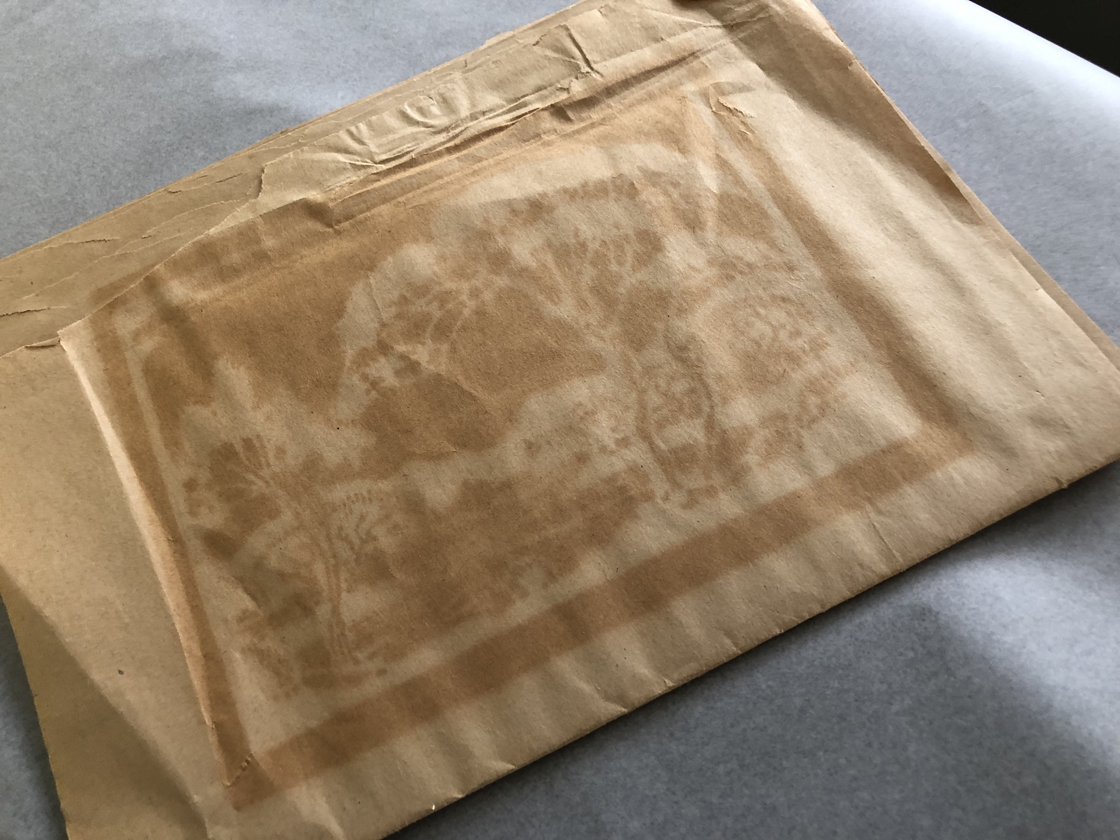
Window Burn
A stain caused by prolonged exposure with an acidic mount board. Window burn tends to have a darkening effect around where the window was creating a kind of framing effect.
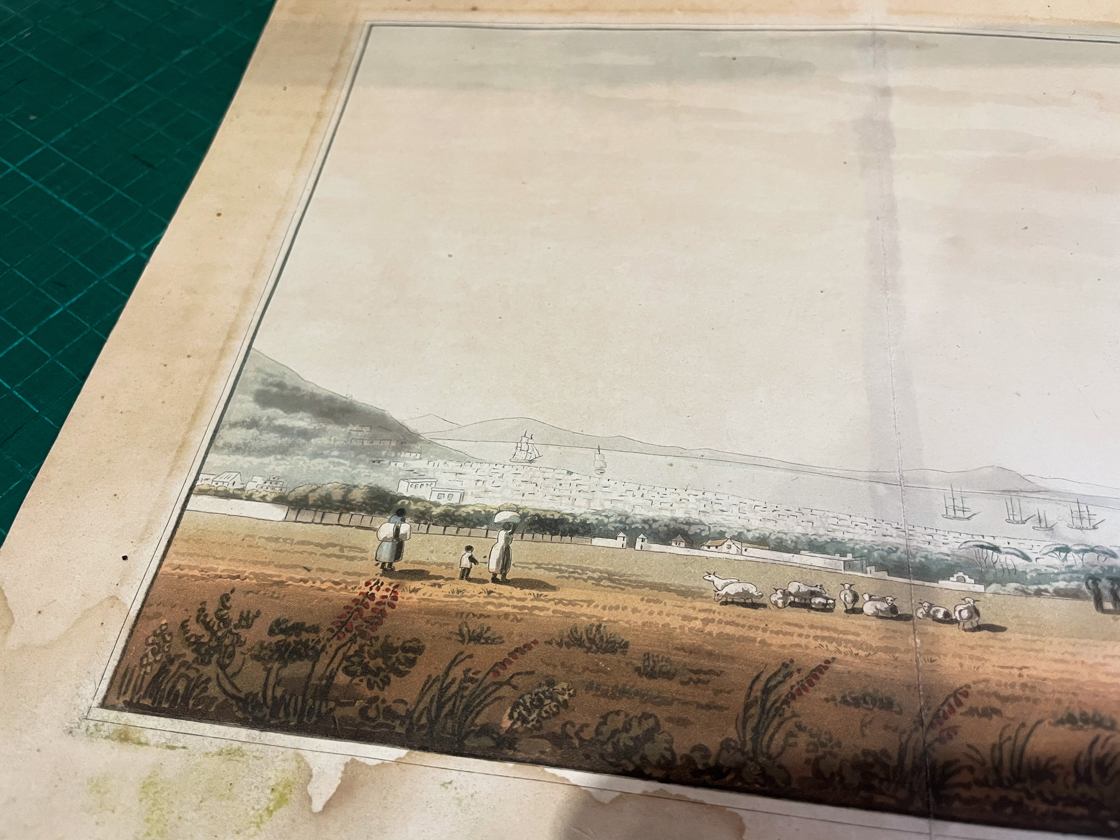
Foxing
Foxing is an age-related process of deterioration that causes spots and browning. The name may derive from the fox-like reddish-brown colour of the stains, or the rust chemical ferric oxide which may be involved.
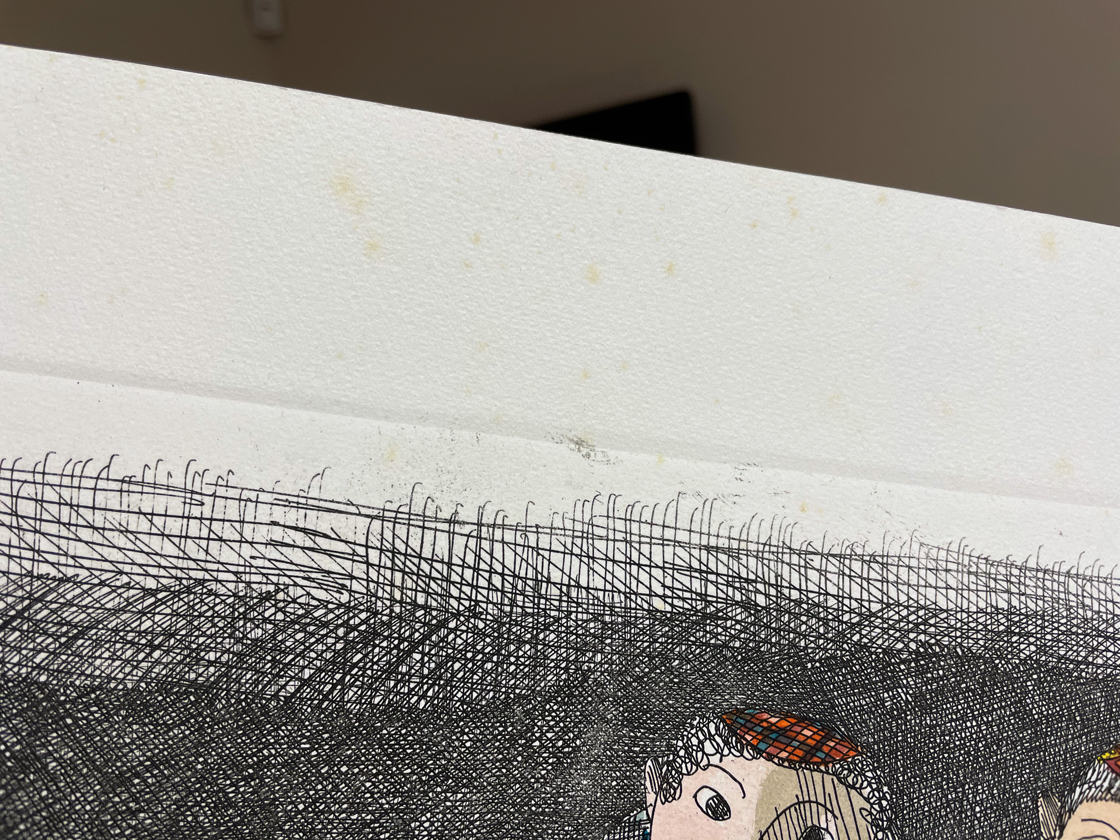
Mold
Mold is caused when sufficient moisture is present. Make sure artworks are properly sealed and corks are adhered to the back of the frames to keep them away from any outside-facing walls.
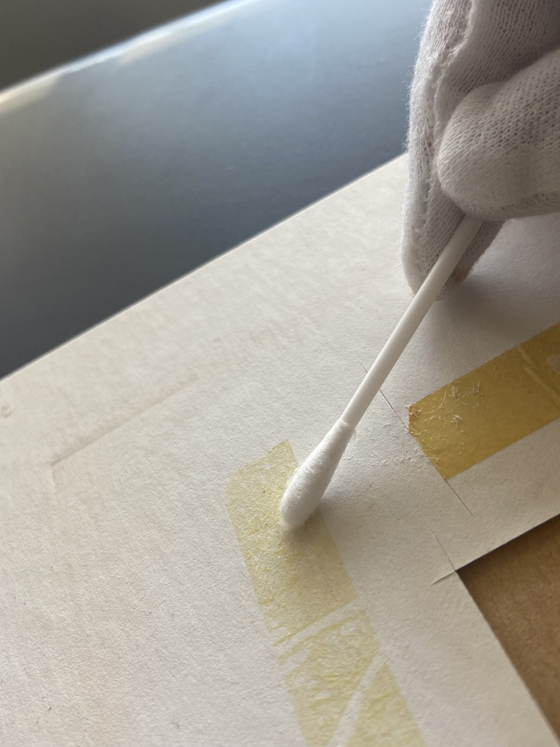
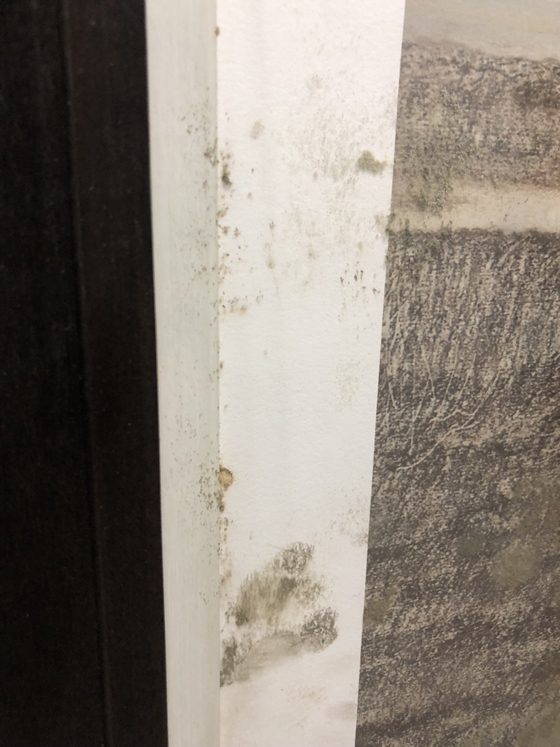
Tape residue
Only archival tape should be used when adhering tape to any artwork. If the correct tape is not used, the acidity of the tape can burn into the artwork.

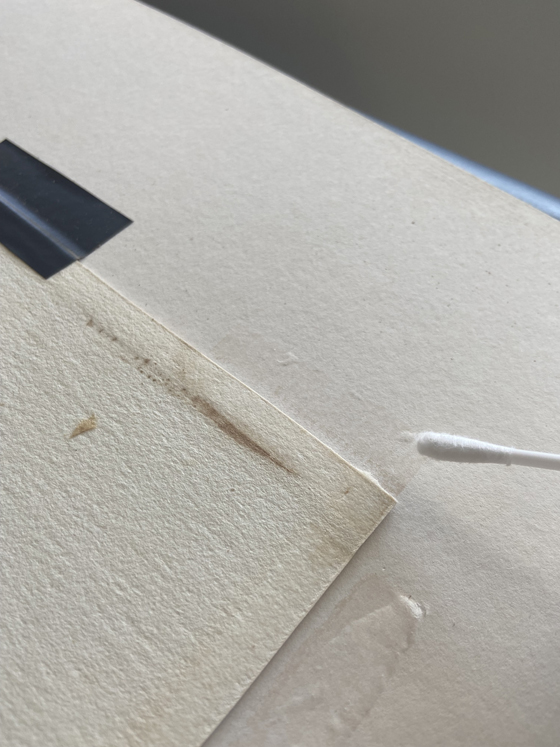
I have a work that is showing signs of deterioration. What should I do?
Both conservation and restoration practices go hand-in-hand and have become an increasingly important aspect for museums, artists and collectors. If you have an artwork that shows any signs of the aforementioned ageing and/or deterioration, all is not lost! South Africa boasts world-class restorers. Our preferred paper specialists are DK Conservators. With probably one of the most interesting professions, we had the chance to tour their facilities and ask them a few burning questions.
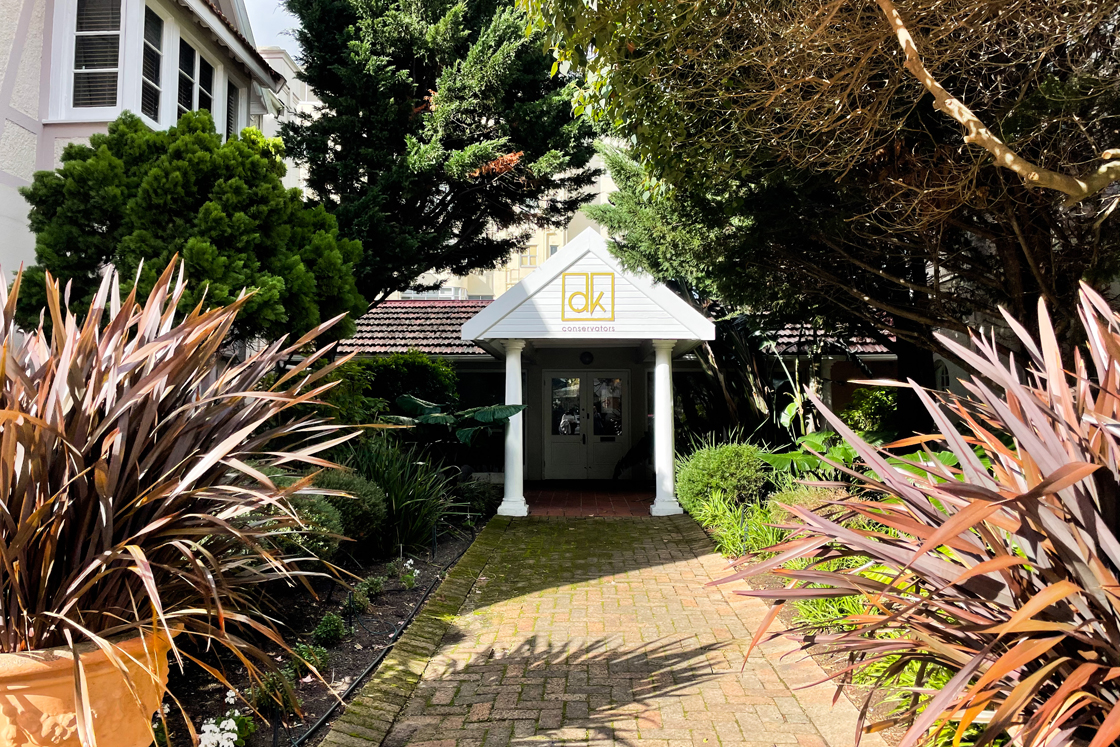
Questions
What is the most common cause of paper deterioration?
It is almost always art or books not being preserved properly; people don’t always consider the long-term effects of incorrect framing and/or storing can have on the longevity of their items.
What is the best way to store an unframed print?
Place the artwork in a polyester sleeve, then add an acid-free mount board as backing to support the work. Make sure you store the print in a dry area and out of direct sunlight.
Is there something you can do if the artwork was already created on acidic paper?
Yes, you still have options left. Aqueous treatments are available: this can get rid of the yellowing of the paper. However, the artwork will most likely discolour again with time.
What type of damage do you see the most?
Foxing and discolouration are the most frequently seen.
Importance of UV resistant glazing?
Any artwork that doesn’t have protection against sunlight can activate lignin. This is why it is important to consider UV-resistant glazing.
How long does it take to salvage a work?
Every work is unique: it can take from a few weeks up to several years!
What was your most intricate work that you had to repair?
We have a delicate project that has been going on for over a year.
Do you only repair important work?
Value is in the eye of the beholder. What may be considered sentimental to some, may not be considered valuable to others. The value of the artwork does not change how we approach the work. Every single piece is unique and valuable in their own way and will get the same type of attention.
What is the best type of paper to print/use for conservation purposes?
We recommend archival paper — 100% cotton-rag based paper.
Photograph Comparison | Before and After Conservation
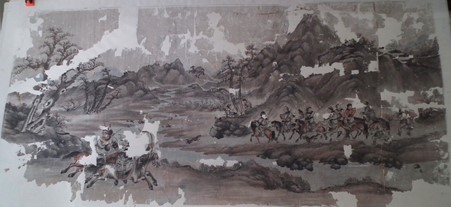
Chinese artwork before conservation
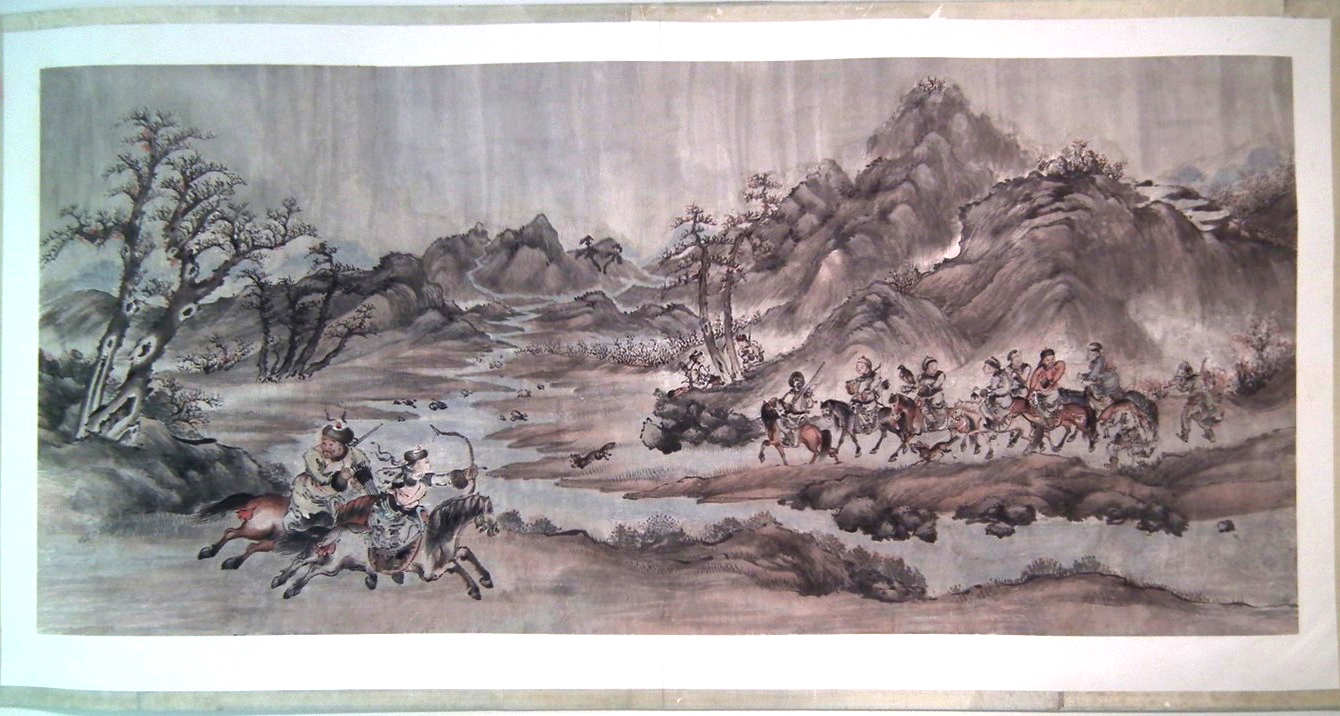
Chinese artwork after conservation











